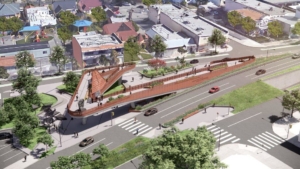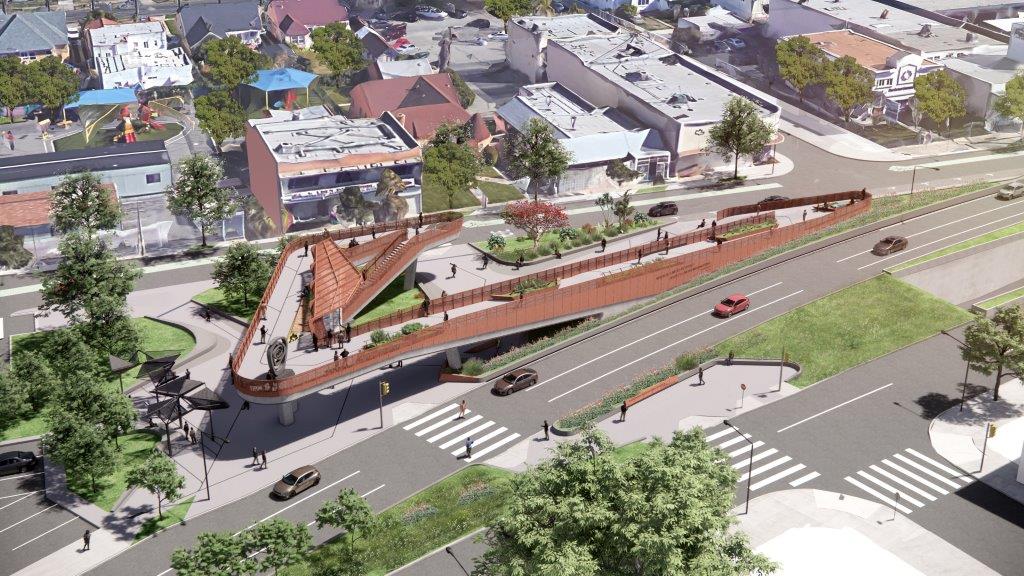
The Department of the Treasury’s New Markets Tax Credit (NMTC) program provides tax credits that represent about 39 percent of the project’s cost. The tax enhancements go to private sector firms that are selected to deliver the economic development initiative.
Public officials apply for this funding, and selections are made based on specific criteria. One of the basic tenants, however, is that the projects must be in underserved areas or where ‘quality of life benefits’ can be delivered to citizens.
A recent award of $30 million in NMTC funding will support the re-development of Los Angeles’ Crenshaw Boulevard. The project will center on a 1.3-mile stretch of roadway within the state’s most populous city. Numerous components of the roadway project include reforesting the corridor with over 800 trees, installing approximately 100 murals and sculptures created by local artists, building 10 community park spaces, and allocating an area to accommodate 43 businesses.
Another NMTC award has been announced for the redevelopment of a former mall in Cedar Rapids, Iowa. This project will have a budget of $34 million to deliver mixed-use housing. The city also approved $10 million for redevelopment of idle land which will be transformed into a four-story mixed-use facility with commercial space, residential units, and adjoining parking facilities.
Not all economic development initiatives involve federal funding and/or incentives because revenue is available elsewhere as well. City leaders in Charlotte, North Carolina, recently allocated $37 million for economic development projects. However, city leaders want the money to be used to foster and encourage P3s. Priorities include citywide projects such as corridor enhancements, pedestrian connectivity improvements, public infrastructure improvements, and private development projects.
A development project in Bennington, Vermont, is being planned to connect mixed-use facilities to a burgeoning arts district. The plan is to construct a four- or five-story building with retail space and rental units. Construction of the building, which will also include medical offices and a possible fitness area, is expected to cost between $29 million and $40 million.
A 258-acre sports park is outlined in an economic development plan in Murfreesboro, Tennessee. City officials there recently voted to approve what will be known as the Legacy Sports and Entertainment Park. With a new designation as an economic development zone, the $350 million “commercial outdoor amusement project” will be positioned along a new highway to promote connectivity. Design of the sports park features a variety of indoor and outdoor athletic activities including basketball, hockey, obstacle course racing, pickleball, dance, esports, fitness, baseball, and soccer.
Notable projects in Florida are likely to be delivered by a P3 model. In Panama City, Florida, officials recently approved an economic development plan that proposes construction of a Martin Luther King Jr. Recreation Center. Conceptual design work on the recreation center includes a community center, a gymnasium, pedestrian walking trails, picnic areas, playgrounds, a STEM lab, and parking facilities. The timeline for the project’s construction takes place over two phases, and initial construction is projected at $14.7 million for the recreation center.
The governor of Maryland recently signed a bill authorizing the Maryland Stadium Authority’s issuance of $400 million in bond funding for a transformative development project. The funding is allocated for various enhancements to the Blue Line Corridor Project in Prince George’s County. It will include large construction projects such as an amphitheater, recreation center, cultural venue, and sports facility. Early conceptual design work also programs $40 million for the 2023 construction of a cancer center along the Blue Line Corridor in Largo. The county will also receive a $20 million allocation from the state for infrastructure improvements along the Blue Line Corridor.
City officials in Bellevue, Washington, approved initial plans for a development project in the city’s Wilburton neighborhood. The objective is to create a “cultural and innovation hub.” It will be in an area that offers walking trails, access to several light rail stations, and future connections to public transportation. This initiative is in the initial stages, but it will have an abundance of contracting opportunities for private-sector partners.
These opportunities reflect the evolving face of economic development. The projects, whether they include new construction of facilities or enhancement of other public assets are excellent examples of partnerships and alternative funding methods that stimulate economic vitality. The projects are large and complex, yet critically needed.
P3s will be attractive because private-sector expertise will be required. As federal tax credits and large state allocations continue to provide funding, these types of projects will only multiply in number. So, monitoring the funding allocations is a good way to be alerted to new contracting opportunities.







